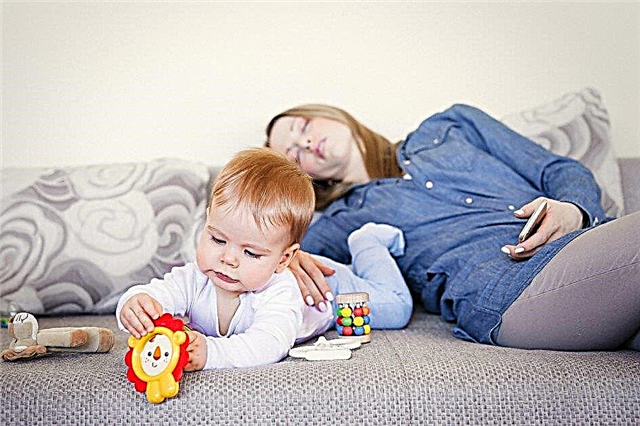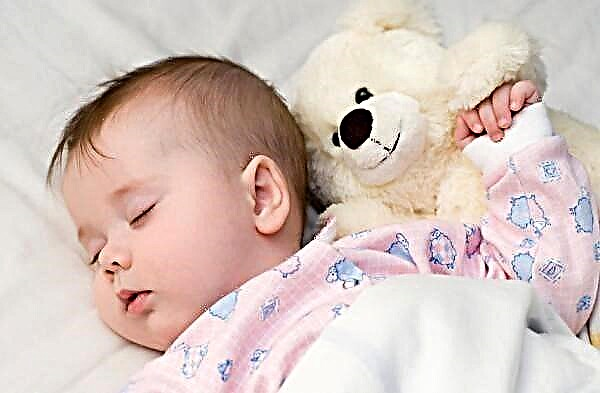The debut of such a common allergic eye disease as atopic conjunctivitis, most often occurs in childhood. In most cases, this disease is accompanied by the course of an allergic rhinitis. A brighter clinic of conjunctivitis can be observed during the flowering period of plants in children suffering from hay fever, that is, susceptibility to allergens, pollen.

Allergic conjunctivitis in a child and its types
This disease in children is formed as a result of allergic immune inflammation of the conjunctiva of the eyes when interacting with certain substances.
Distinguish between seasonal allergic conjunctivitis and year-round. Seasonal is observed in children during the flowering period of trees and grasses. In some cases, there is a hypersensitivity to mold allergens.
With a year-round form of conjunctivitis, the symptoms of the disease are observed in a child constantly, regardless of the season. Often, such a manifestation of allergy can be observed with household and fungal sensitization.
Causal factors in the development of atopic conjunctivitis in a child
- house and book dust;
- fungi;
- animal fur and epidermis;
- insect allergens (especially cockroaches);
- pollen of trees, grasses;
- medicines;
- food allergens.
The mechanism of occurrence of allergic conjunctivitis
When a child meets an allergen, an immune reaction of hypersensitivity is triggered with the production of specific antibodies.

Further, a cascade of reactions is potentiated with the release of biologically active substances and the formation of a focus of allergic inflammation.
Clinical manifestations of allergic conjunctivitis in a child
The baby's eyes turn red, swelling and swelling of the eyelids appears, the child is worried about itching and tearing.
In some cases, a secondary infection may be added with the formation of bacterial complications. Purulent discharge from the eyes appears, the eyelids stick together.
How to suspect a child with allergic conjunctivitis?
Remember that with year-round conjunctivitis, symptoms of the disease are less pronounced than with seasonal conjunctivitis.
- symptoms of conjunctivitis in household hypersensitivity can appear only with close contact with an allergen during cleaning, repairs, while staying in a dusty room;
- lacrimation and itching of the eyes can be aggravated by contact with tobacco smoke, exhaust fumes;
- with allergy to pollen proteins, there is a very clear frequency of symptoms. That is, redness and itching of the eyes appear strictly in certain months and even days every year;
- deterioration of the patient's condition with pollen hypersensitivity is observed in dry hot weather, outside the city, in the forest;
- when using cosmetic preparations with plant extracts in a child suffering from pollen allergy, conjunctivitis and skin rash may occur;
- in case of allergy to fungi, the symptoms of conjunctivitis in a child are aggravated in the spring and autumn periods, during stay in wet rooms, after rain;
- when eating yeast baked goods, kvass, cheese in children with fungal hypersensitivity, symptoms of conjunctivitis may appear;
- the presence of allergy to dust does not exclude the presence of pollen and fungal hypersensitivity in the child. In this case, the symptoms bother the baby throughout the year with frequent exacerbations during the flowering period.
With the exclusion of meetings with an allergen, the symptoms of conjunctivitis disappear.
Children with allergic conjunctivitis often have a hereditary predisposition.
Diagnosis of atopic conjunctivitis in children
What tests can a doctor recommend for a baby with allergic conjunctivitis?
 Let's consider them in more detail:
Let's consider them in more detail:
- General blood analysis.
- Conjunctival smear cytology.
- Conjunctival swab for bacterial culture.
- Allergic examination using skin tests.
- Determination of specific antibodies to allergens in the blood.
- Allergen provocative tests.
What eye diseases should be distinguished from allergic conjunctivitis?
- allergic keratoconjunctivitis. Children under the age of five often get sick. A distinctive feature of the disease is photophobia. Both eyes are more often affected, combined with skin rashes. The disease is terrible for its complications in the form of cataracts, retinal detachment;
- viral and bacterial conjunctivitis. Symptoms are the same as for allergic conjunctivitis. Virological and bacteriological research reveals the pathogen;
- spring Qatar. It is more often recorded in boys over 4 years old. The symptoms of conjunctivitis appear in the summer and spring in conditions of insolation. The upper eyelids are affected, photophobia appears;
- dry keratoconjunctivitis. It is more often found as part of Sjogren's syndrome. The presence of photophobia, blurred vision, dryness of the conjunctiva are characteristic.
Treatment
A sick child needs advice from a pediatric ophthalmologist and an allergist-immunologist.
 Treatment is carried out on an outpatient basis, but in some severe cases it is recommended hospitalization in a hospital.
Treatment is carried out on an outpatient basis, but in some severe cases it is recommended hospitalization in a hospital.
- The first and most important step in therapy is to separate the child from the causative allergen. The allergist will give you recommendations for a hypoallergenic lifestyle and diet, which must be strictly observed.
- If an allergen is detected according to the results of skin tests, allergen-specific immunotherapy (ASIT) is prescribed. Currently, this therapy is the only way to permanently protect yourself from allergy symptoms in a child. ASIT is injectable and sublingual. For children, the second method is preferable.
- Local therapy. For mild symptoms, it is recommended to use cromoglycic acid in the form of eye drops. Local antihistamines Azelastine, Diphenhydramine can also be used. In severe cases with an extensive lesion, drops of dexamethasone 0.1% are used. In the case of a secondary infection, drops containing an antibiotic are added to the treatment.
- Basic treatment. To relieve itchy eyes, antihistamines are used in age-specific dosages: Zodak, Zirtek, Ksizal, Erius. Leukotriene receptor antagonists (Singular) are used in preparation for the flowering season.
Treatment of complicated forms of conjunctivitis is carried out by an ophthalmologist.
- Further therapy.
After removing the exacerbation, the child should be under the supervision of an allergist-immunologist. With a seasonal form of conjunctivitis, it is advisable to consult a specialist one month before the beginning of the flowering season.
With a year-round form, consultations with an allergist are carried out as planned. Parents are encouraged to attend classes at the allergy school, where you can get all the necessary information on organizing everyday life.
Disease prognosis
In the overwhelming majority of cases, the prognosis is favorable. When a causal allergen is identified and ASIT is performed, recovery is observed in 90% of children. With advanced forms, late seeking medical help, cases of severe complications, including blindness, are not uncommon.
Memo to parents of children with hay fever
- Pollinosis is a disease caused by pollen. Pollen contains a protein that very often leads to the formation of allergic reactions. Pollen grains are carried by the wind, and during the flowering period, the concentration of allergens in the air becomes enormous. For the European part of Russia, the flowering period of trees begins in mid-April and ends in June. Cereals bloom in June - July. Weeds in August - September.
- For patients with hay fever, compliance with the elimination diet is mandatory. If you are sensitized to tree pollen allergens, you should stop eating apples and stone fruits, carrots, celery. If you are allergic to cereal grasses, you can not use kvass, bran, cereals, cereals. In case of hypersensitivity to weeds, exclude mayonnaise, melons, watermelons, halva, sunflower seeds.
- Beware of the use of cosmetics that contain herbal extracts.
- The use of herbal remedies is prohibited.
- During the flowering period, the best solution is to travel to an area with a different dusting calendar - Crimea, Turkey, Egypt, Greece.
- During the flowering period, it is not recommended to take the child out of town, to the country house, or visit parks.
- An air purifier with a HEPA filter should be installed at home.
- The child should take a shower every time after going outside.
- As often as possible during the flowering period, you should rinse your nose, eyes, gargle.
During the period of plant dusting, a patient with hay fever is prohibited from vaccinating or performing operations.
- The child should avoid heavy physical and psycho-emotional stress during the flowering period.
Article rating:



